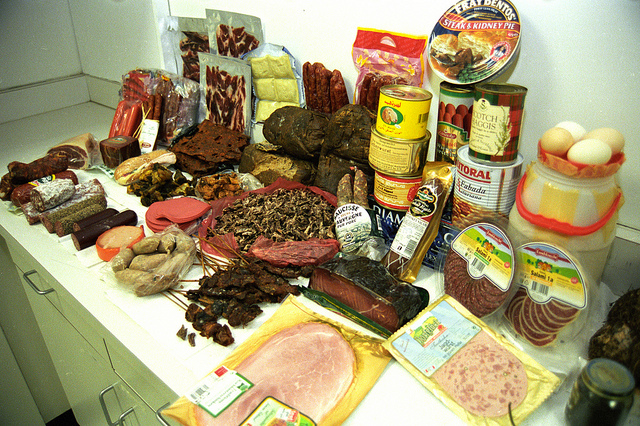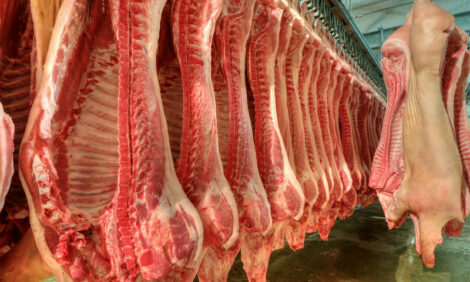



What is the likelihood of African swine fever entering the US?
The USDA provides a qualitative assessment of the ways that ASF could get to the US swine herd.With the ongoing spread of ASF through Asia and Europe, pork-producing nations around the world are re-evaluating the effectiveness of their biosecurity at borders, in transport, slaughterhouses and on farm.
Illegal entry of swine products and byproducts presents the largest potential pathway for the entry of African swine fever virus into the US according to a recent report produced by the US Department of Agriculture.
Port inspection and interception data indicates that:
1) air passenger baggage and foreign mail are two of the largest illegal pathways; and
2) pork, ham, and sausage are the products with the highest interception rates.
The interception data agrees with other studies that demonstrate potential entry of African swine fever virus other swine diseases through the air passenger pathway.
While there are no studies that look at foreign mail as a pathway for entry of animal disease, our interception data, estimate of annual volume of packages entering the US and estimate of product concealment in mailed packages indicates that foreign mail is an entry pathway that warrants greater analytical scrutiny similar to the air passenger pathway.
When estimating the likelihood of ASF entry into the US, the USDA considered the following factors:
- The overall volume of imports in terms of passengers, animals, shipments, etc. that could
potentially be contaminated. - Inspection effort and detection efficiency.
- The number and effectiveness of various regulatory and mitigation actions to reduce disease prevalence/transmission along the pathway such as diagnostic testing, treatment, disinfection, certificates of animal health, compliance agreements, product labelling/traceability, quarantine, regionalisation, etc.
- Available research to quantify viral prevalence, survival, and/or transmission probabilities by pathway.

Results
Live pigs
The likelihood that ASF will enter the US through the legal importation of live pigs is negligible with low uncertainty. These estimates are based on:
- All live animal imports are from countries that are currently free of ASF (primarily Canada).
- Various regulatory and import requirements relating to animal health mitigate the likelihood of ASF transmission, if properly implemented.
- High quality and availability of live animal import data reduces uncertainty of likelihood rating.
The likelihood that ASF will enter the US through the illegal importation of live pigs is negligible to low with moderate uncertainty. These estimates are based on:
- Available data across three databases report zero interceptions of smuggled live pigs in recent years.
- Increasing US demand for imported wildlife/wildlife products increases the likelihood of illegal importation, despite no reports of interceptions.
- Imports likely under-reported as there may be a bias of inspection toward CITES wildlife and wildlife products, increasing likelihood estimate. Uncertainty with regard to accuracy of data reporting increases uncertainty to moderate.
Swine products and by-products
The likelihood that ASF will enter the US through the legal importation of swine products and by-products is negligible to low with moderate uncertainty. These estimates are based on:
- Zero import volume for pork products from ASF-affected countries. Imports are limited to swine by-products.
- Various regulations in place that either prohibit entry or subject these products to various additional processing measures to inactivate disease-causing agents reduces the likelihood of entry.
- Conflicting or insufficient evidence on OIE treatment recommendations to inactive ASF virus increases uncertainty and likelihood estimates
- Uncertainty with regard to detailed processing/handling of hog casings imported or reimported from ASF-affected countries.
The likelihood that ASF will enter the US via the illegal entry of swine products and by-products is high with low uncertainty. These estimates are based on:
- High volume of arrivals and the variety of human-assisted movement pathways increase likelihood even with very low prevalence of infectivity.
- Low inspection rates at ports of entry increase likelihood that products enter the US undetected.
- Available interception and inspection databases are either complete or have been supplemented to reduce uncertainty.
- Certain pathways were discontinued from the AQIM surveillance program, so unbiased approach rates are no longer available for cruise ships, express couriers, etc. However, WADS continues to report high volumes of swine products interception on these pathways, reducing uncertainty.
- Imperfect detection efficiency of X-ray scanners compared to manual inspection increases likelihood.
- Evidence of ASF contamination in swine products intercepted at other foreign airports, though there is uncertainty in the prevalence of infectivity for US imports.
Bushmeat
The likelihood that ASF will enter the US via the illegal entry of swine bush meat or wild animal parts is low to moderate with high uncertainty. These estimates are based on:
- Low volume of bushmeat/trophies reported as being intercepted compared to other pathways.
- Increased uncertainty in import volume as there may be bias of inspection toward CITES wildlife and wildlife products.
- Increasing US demand for imported wildlife/wildlife products might increase likelihood of illegal import.
- The US and other countries report illegal entry of bush meat from countries affected by ASF.
- Uncertainty of whether intercepted bush meat or animal parts were of swine origin.
- No data available on the detection rate of wildlife import violations, particularly undeclared imports.
Feed ingredients (plant-based)
The likelihood that ASFv will enter the US via the legal importation of plant-origin feed ingredients from ASF countries is negligible to moderate with high uncertainty. These estimates are based on:
- Moderate to high percentage of soybean imported to the US originate from ASF-affected countries increases likelihood.
- Low percentage of mixed/prepared animal feeds imported to the US originate from ASF-affected countries reduces likelihood.
- Uncertainty in the reporting of volume as shipments lines instead of weight makes it difficult to estimate entry likelihood relative to other pathway import volumes.
- Likelihood estimates rely on assumption of plant contamination from viral shedding in the fields:
- Variability in the degree of shedding of ASF viruses in faeces depending on the virus strain, where higher titres in faeces could be reached for some virus strains in a small proportion of infected pigs.
- Uncertainty in the rate of inactivation of ASF viruses in moist or dry faeces at different temperatures over time.
- The relatively higher dose required for oral transmission of ASF viruses and outcomes from oral feeding trials from several studies.
- A single study indicates potential for ASF (Georgia 2007 isolate) to persist post inoculation in various feed ingredients under a 30-day simulated shipping model.








